Abstract
A total of 268 isolates of coagulase-positive staphylococci from a variety of animal species, including dogs, horses, cats, monkeys, goats, and cows, were assigned to species on the basis of the API Staph- Ident system (Analytab Products, Inc., Plainview , N.Y.). Of 195 isolates from dogs, 179 (91.8%) were Staphylococcus intermedius, as were 9 of 25 (36%) isolates from horses, 7 of 15 (46.6%) isolates from cats, and 4 of 6 (66.6%) isolates from goats. Only 1 of 10 isolates from monkeys and none of 7 isolates from cows were S. intermedius. Of the remaining 68 cultures, 63 were identified as Staphylococcus aureus and 5 as Staphylococcus hyicus. The latter identifications were rendered doubtful on the basis of conventional tests. Identification appeared to be more certain in the S. aureus sample than in the S. intermedius sample. Distribution of biotypes within the two bacterial species as represented by different API profile numbers and reactivity on test substrates showed no significant variations among the host species, except for the S. aureus biotypes in dogs. Both Staphylococcus species were represented about equally among samples from different tissues and lesions, apart from skin-related infections in dogs, which were associated exclusively with S. intermedius (P less than 0.01). Differences between S. aureus and S. intermedius in antimicrobial susceptibility patterns, prevalence of clumping factor, and occurrence of beta-toxin were found to be not significant.
Full text
PDF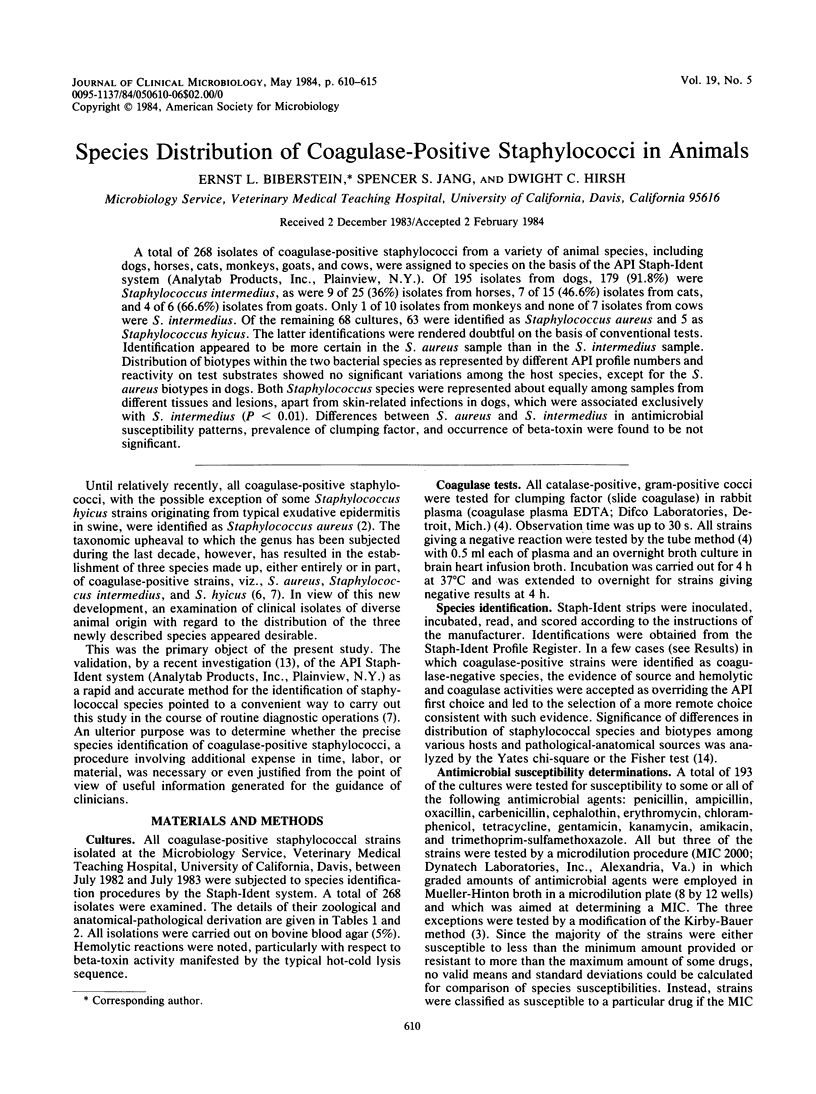

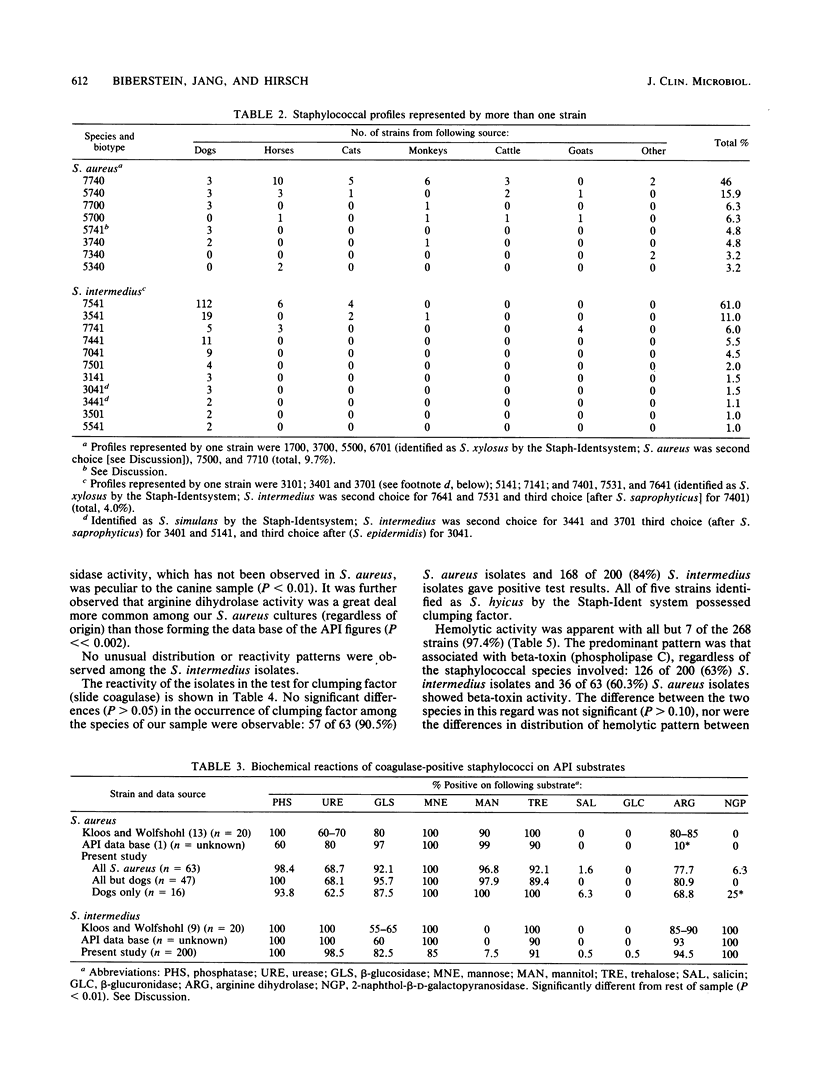
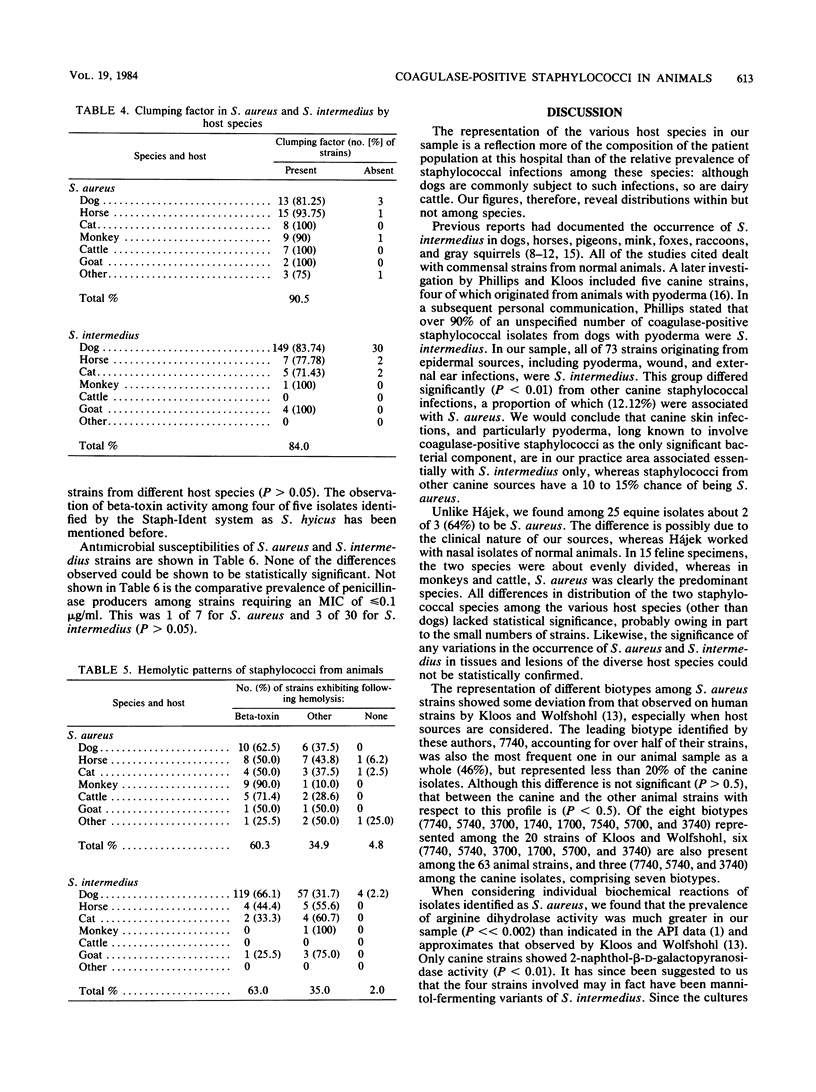
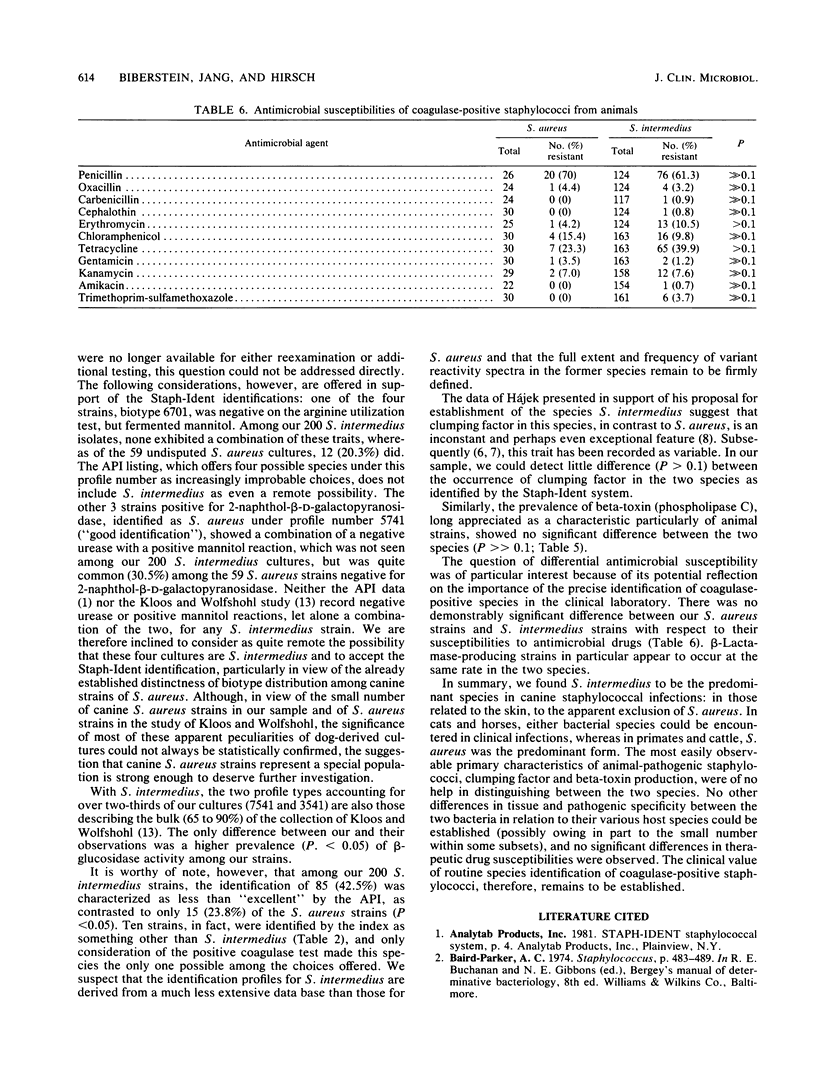
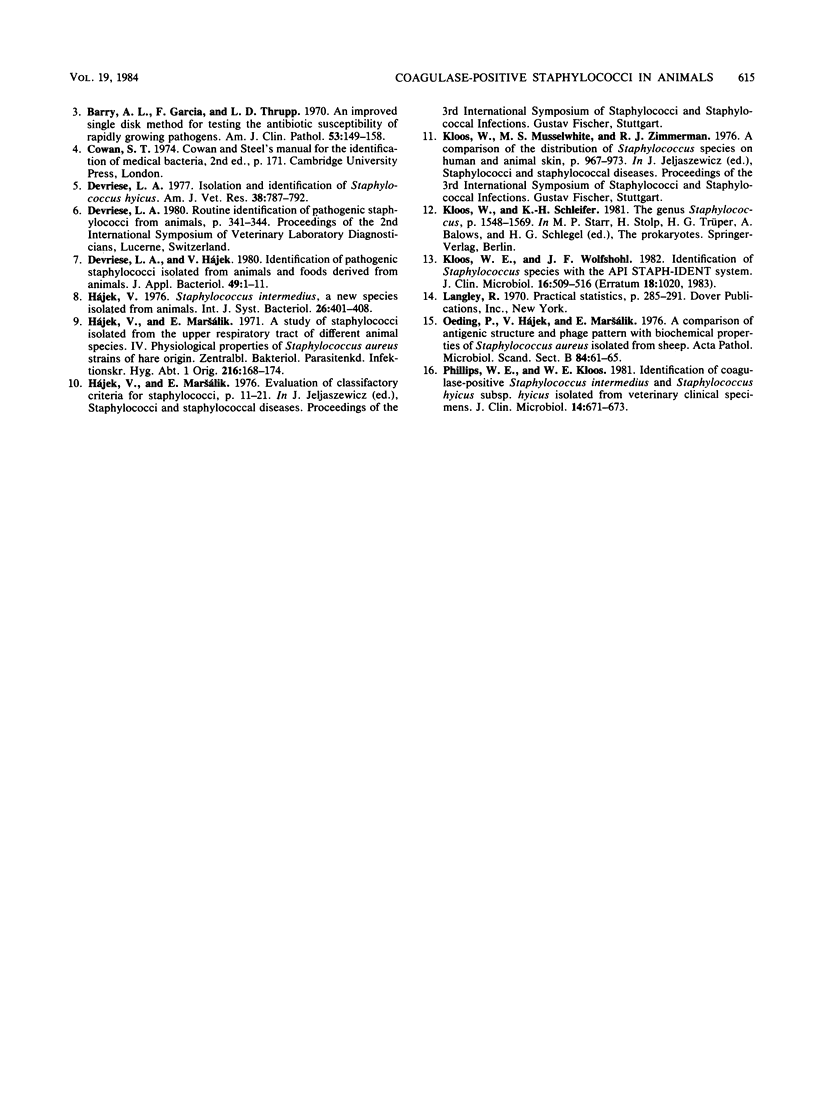
Selected References
These references are in PubMed. This may not be the complete list of references from this article.
- Barry A. L., Garcia F., Thrupp L. D. An improved single-disk method for testing the antibiotic susceptibility of rapidly-growing pathogens. Am J Clin Pathol. 1970 Feb;53(2):149–158. doi: 10.1093/ajcp/53.2.149. [DOI] [PubMed] [Google Scholar]
- Devriese L. A., Hájek V. Identification of pathogenic staphylococci isolated from animals and foods derived from animals. J Appl Bacteriol. 1980 Aug;49(1):1–11. doi: 10.1111/j.1365-2672.1980.tb01038.x. [DOI] [PubMed] [Google Scholar]
- Devriese L. A. Isolation and identification of Staphylococcus hyicus. Am J Vet Res. 1977 Jun;38(6):787–792. [PubMed] [Google Scholar]
- Kloos W. E., Wolfshohl J. F. Identification of Staphylococcus species with the API STAPH-IDENT system. J Clin Microbiol. 1982 Sep;16(3):509–516. doi: 10.1128/jcm.16.3.509-516.1982. [DOI] [PMC free article] [PubMed] [Google Scholar]
- Oeding P., Hájek V., Marsálek E. A comparison of antigenic structure and phage pattern with biochemical properties of Staphylococcus aureus strains isolated from sheep. Acta Pathol Microbiol Scand B. 1976 Feb;84(1):61–65. doi: 10.1111/j.1699-0463.1976.tb01902.x. [DOI] [PubMed] [Google Scholar]
- Phillips W. E., Jr, Kloos W. E. Identification of coagulase-positive Staphylococcus intermedius and Staphylococcus hyicus subsp. hyicus isolates from veterinary clinical specimens. J Clin Microbiol. 1981 Dec;14(6):671–673. doi: 10.1128/jcm.14.6.671-673.1981. [DOI] [PMC free article] [PubMed] [Google Scholar]


